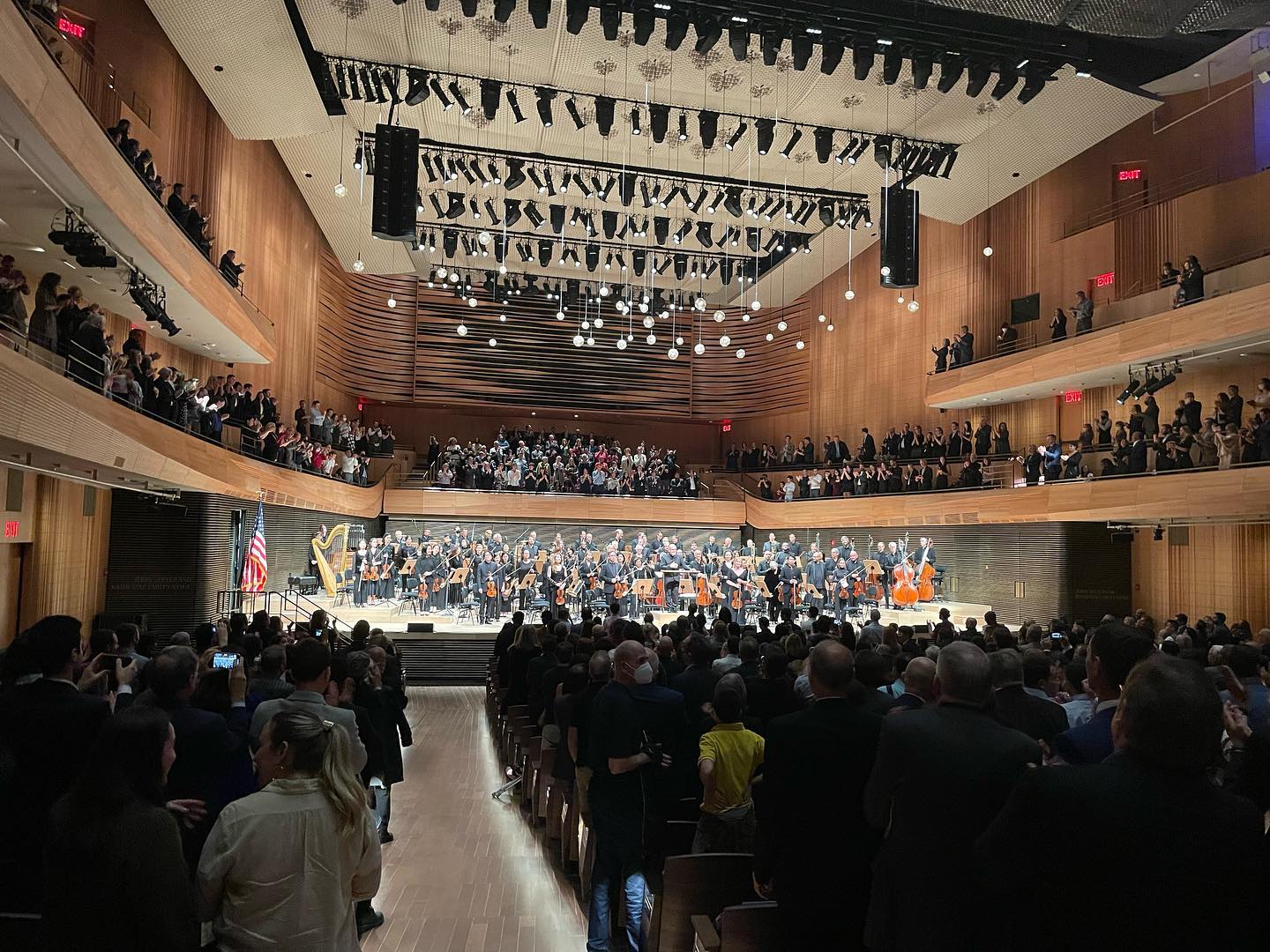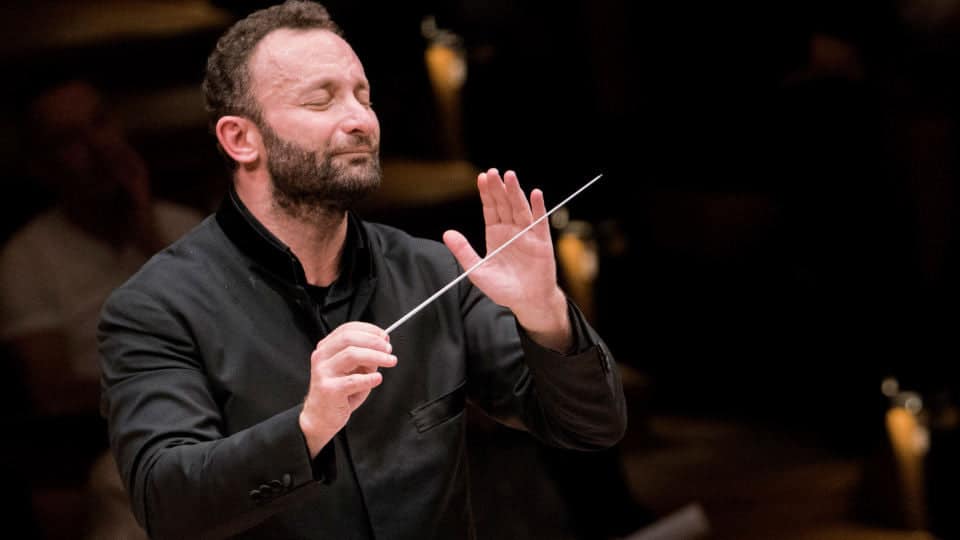Is Norway the white hope for orchestras?
mainThere are sixteen orchestras in Norway. The population is less than five million.
Musical life thrives all the way up to the Arctic and musicians from all over the world are taking an interest. Last week, there were auditions for a trombone vacancy at the radio orchestra in Oslo. Applications were received from 85 candidates, most of them in other countries.
Norway can be very cold and is unkind to whales. However, by staying out of the European Union and prospecting for oil it has sustained a thriving economy and culture. Musicians may have woken up to those realities ahead of the rest of the world.






How did you determine that Norway’s thriving musical culture is due to staying out of the Euro zone? I’m missing a logical step or two.
As Norway has never been a member of the European Union (in its current or previous incarnations) the option of joining the Euro never existed so it is misleading to suggest it “stayed out” of the Euro.
To understand your stats (16 orchestras for 5M people) we would need to know the size of the orchestras and the length of their seasons. If they are fulltime symphonic ensembles, that would come to one for every 312,000 people. Some EU countries also do very well. Germany has one 52 week season orchestra for every 630,000 and Austria one for every 500,000. The USA, by contrast, has one 52 week season orchestra for every 14,000,000 – or about 1/28th the number as Austria and 1/22nd the number as Germany.
We might also note that Norway has the second highest per capita GDP in the world (oil money) while Austria is 13th and Germany 19th.
The USA ranks 10th in per capita GDP and yet has the lowest number of 52 week season orchestras per capita of any developed country in the Western world. Not surprisingly, the USA is also the only developed country in the world without a comprehensive system of public arts funding. That’s one reason there were so many foreigners applying for the Oslo job. American classical musicians have to leave their country as economic refugees to find work.
And 50 years ago the number of 52 week season orchestras in the USA was zero. Yet classical music was a much greater part of the public consciousness than it is today.
Americans are far below international standards even counting part-time professional orchestras. We are also behind in terms of music education and the number of people who make music as amateurs (especially as opposed to 50 years ago.) Germany has 83 year-round opera houses while the USA with four times the population has zero. There’s no big mystery here. If we don’t put money into classical music, we’re not going to have it. Shall we surrender the stage to Ms. Spears and Mr. Bieber?
I’m a bit confused as to why “Applications were received from 85 candidates, most of them in other countries”
is cause for comment. Orchestral vacancies in the UK routinely attract this many applications, both from the UK and abroad.
Because in the UK you don’t have to speak Norwegian.
and you think they rehearse in Norwegian in Bergen and Oslo?
They do
@ Helena – yes, they do often rehearse in their own language. Not all the time, but whenever Scandinavian conductors are present they generally use their own language, Swedish/Norwegian/Danish being generally understood by all across Scandinavia and preferable to English in my experience. In addition, many Finnish conductors also speak and use Swedish for rehearsals in other parts of Scandinavia. Surely though, having to learn a language is a small price to pay for a great job in a culture that nurtures the arts as the Scandinavian countries do. Of course it is not a requirement for audition, as English is not for orchestral jobs in the UK, though one would be foolish to not get a grasp of the language as soon as possible in either situation.
I don’t know how you came to the conclusion that there are 16 orchestras in Norway, was it by looking at musicalchairs? Because the listing there contains several opera companies that are project based (Norway only has one opera orchestra), a piano quintet and a couple of other project based orchestras, mainly consisting of musicians from already excisting orchestras mixed with freelancers.
As far as I know, Norway has 6 full time symphony orchestras, most of them in the smaller end of the scale as to the number of musicians. There’s one more symphony orchestra, which as I understand it is quasi full time (in the north of Norway, uses musicians from two smaller orchestras plus the military band). There is 1 opera orchestra.
In addition to this, there are also 6 professional wind bands, 5 of which are employed by the military.
As to the auditon, quite a lot of people know you don’t have to speak Norwegian to live and work in Norway, at least not in the beginning, as basically all Norwegians speak quite good English.. The audition information was also posted in good time in advance, and seeing as bass trombone auditions generally are so rare in all countries, and people move around quite a lot in the world these days, it’s not that extraordinary that so many people apply for it, although it is quite a large number of applicants for a bass trombone job. I think it’s been at least 5-6 years since there was a bass trombone audition for a symphony/opera orchestra in Norway.
And also, people might think that since Norway is quite a rich country, the payment would be quite ok also 😉
Mia, I included the opera orchestra. I cannot vouch for the others. Can someone from the Norwegian musicians’ union clarify the situation?
In Norway, you will find the following full-time orchestras:
Oslo Philhamonic Orchestra (around 110 musicians)
Bergen Philharmonic Orchestra (around 100 musicians)
Norwegian Opera Orchestra (around 100 musicians)
Trondheim Symphony Orchestra (around 80-90 musicians)
Stavanger Symphony Orchestra (around 80-90 musicians)
Kristiansand Symphony Orchestra (around 60-70 musicians)
Kringkastingsorkestret – Norwegian Radio Orchestra (around 50 musicians)
Nord-Norsk Symfoniorkester – Norwegian Arctic Philharmonic (around 30-40 musicians, most of the time divided into the Bodø Sinfonietta (string quintet, wind quintet, perc, brass, piano) and Tromsø Chamber Orchestra (strings only in full-time positions), these two groups meet and hire the extras necessary for full symphony projects around 5-6 times a year.
In addition to these, there is the Norwegian Wind Ensemble based in Halden, some 30 musicians I think, and a few full-time chamber groups (12 musicians in Narvik the largest one).
As someone else said: there are also five full-time professional wind bands belonging to the military system (Oslo, Bergen, Trondheim, Horten and Harstad).
So, if I count absolutely everything, I get as far as 18 different organizations that employ performing classical musicians full time. Of those, only seven can be considered “orchestras”, and one performs occasionally as an orchestra.
As for part-time groups, there are some freelance orchestras like Norwegian Chamber Orchestra, Oslo Sinfonietta, Bit20 ensemble and more, but these consist mainly of musicians with jobs in the full-time orchestras. There are no orchestras based on permanent part-time contracts in Norway.
Also, there haven’t been any budget cuts in Norwegian orchestras for many years now, on the contrary, many of the above mentioned orchestras, especially the Norwegian Opera, Stavanger, Trondheim and now Kristiansand, have increased their numbers of musicians substantially in the past few years. There are also plans in Bodø/Tromsø for more jobs.
2012 sees the opening of two new concert halls, for the orchestras in Kristiansand and Stavanger respectively, and construction is just starting for a new hall in Bodø. Of course we don’t forget the fantastic Opera house in Oslo that opened just a few years ago.
So I guess Mr Lebrecht’s main point is valid. But it has nothing to do with whales.
This would make one fulltime orchestra for every 700,000 people, which is more or less the norm for most of Central and Northern Europe. The numbers in some of the southern countries drop off a good bit. I wish we had the details, especially for Italy and France.
I think it has less to do with Norway staying out of the EU than that:
1. The oil and gas per capita in their part of the North Sea was rather greater than in ours.
2. They didn’t have some lunatic called Thatcher in charge selling off the benefits of the oil and gas to her friends.